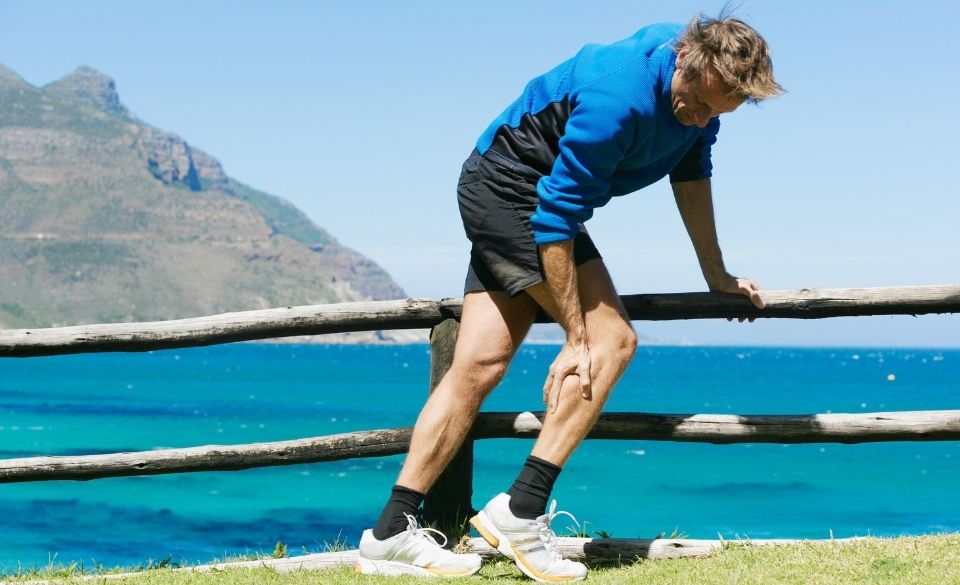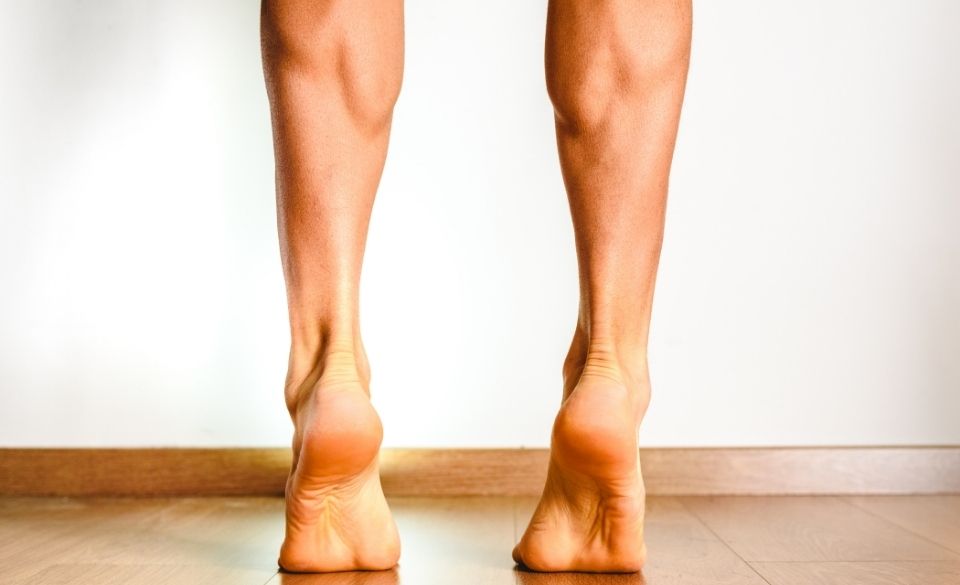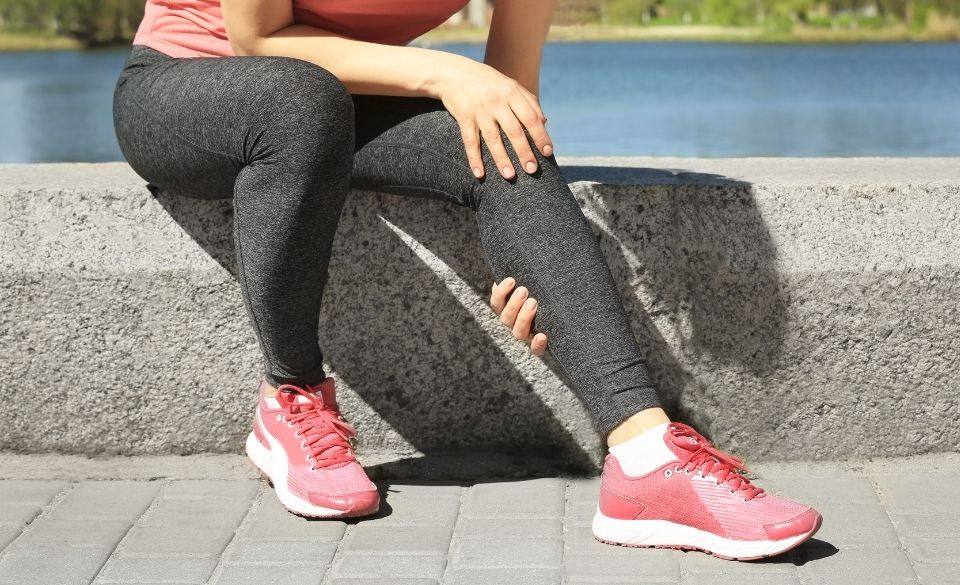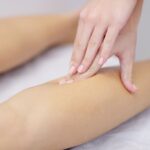
Soleus Pain When Running – Injury Prevention, Recovery & More
Page Contents
Calf pain, especially in the soleus muscle is common within runners. Many runners experience pain, discomfort, and injury of the soleus. This is usually caused by overtraining, fatigue, and change in the running surface.
However, many runners don’t feel a sudden twinge or sharp pain. It is usually an injury that slowly develops over time.
So if you have soleus pain when running keep on reading as we discuss what the soleus is, what causes it to hurt when running and how you can recover from the injury.
What Is The Soleus Muscle?
The soleus muscle is a muscle located in the calf. It runs from directly behind the knee to above the ankle muscles (heel). It is a muscle that is widely used in activities such as cycling, running, walking, sprinting, and jumping.
The soleus muscle belongs to a group of muscles called the superficial posterior compartment calf muscles.
The main function of the Soleus is to act as a skeletal muscle. Paired with the other calf muscles, it provides a strong plantarflexor movement. So it is an important muscle that helps prevent the body from falling forwards.

Soleus Pain When Running – A Complete Guide
Soleus pain when running is one of the most common running injuries runners experience. This type of injury is widely known as an overuse injury, caused by an increase in mileage or change in the running surface.
The most at risk are endurance and long-distance runners. This is because the soleus is often overloaded from spending hours running every week.
However, some people may experience this type of injury when the knee is flexed for a long time. This can happen while running, especially during uphill training.
Soleus pain, injury, and discomfort though can be hard to identify. It can often be missed during a physical examination. So, an MRI or ultrasound is often used to confirm the diagnosis.
IF you are experiencing pain in this region when running, you may feel:
– Pain when using the calf muscles
– Discomfort when pressing on the Achilles tendon
– Pain when doing dorsiflexion movements
– Soreness when stretching the foot, calf, or surrounding muscles
there are three different grades of a soleus injury, these are classed as grade 1, grade 2, and grade 3 as explained below.
Grade 1
If you have a grade 1 soleus injury you may experience:
– Pain when exercising and sometimes a sharp discomfort
– Mild or no pain when running
– Tightness when resting
– Post-run tightness or aching after a run
Grade 2
A grade 2 soleus injury is more severe. The following symptoms can help you diagnose if you have a grade 2 strain.
– Sharp pain when running
– Unable to continue to run pain-free
– Pain when walking
– Swelling of the muscle
– Bruising
– Discoloration of the skin.
Grade 3
Symptoms of a grade 3 soleus strain include:
– Intense pain
– Impossible to run or do physical activity
– Substantial bruising
– Discoloration of the skin
– Swelling of the muscle and surrounding muscles
If you are unsure which grade of injury you have, speak to a qualified professional who can help diagnose the injury correctly.

Why Do My Soleus Hurt When I Run?
There can be a few reasons why your soleus hurts when you run. This can be:
– Overtraining
– Increasing training load too quickly
– Too much hill work
– Poorly designed training plan with lack of recovery
– Change in running surface
All of the above can add load to the muscle and prevent adequate time for recovery. This ends up not allowing enough time for the muscle to recover from training, which results in overuse and strain of the muscle.
Change in running shoes can also cause the soleus to overtighten. This is typically seen in runners that change from a high heel to toe drop to a shoe that has less drop. This ends up putting more strain through the calf muscle when they run.
It is important to allow enough time for recovery if you experience pain in the calf and soleus. So, if this is the case avoid any hard running sessions if you are experiencing discomfort in this area. If you continue to run the soleus muscle will prevent a full range of motion and restrict movements, resulting in the possibility of other injuries creeping up on you.
Regular massage, using trigger point methods, ice and recovery is the best way to prevent it from getting worse. If caught early it can usually be recovered quickly. However, if you continue to run, you may find yourself with a grade 2 or even grade 3 injury that can put you out for months.
How Do I Stop My Soleus From Hurting When I Run?
Luckily there are some ways to prevent your soleus from hurting when you run. Focusing on strengthening the soleus muscle a few times a week can help strengthen the muscle and prevent injuries in the future.
Other things like regular massage, and reducing your mileage can help reduce any symptoms, as well as prevent overuse.
Alternatively, looking at your running gait may provide some information on the load you are experiencing in the calf muscles when you run. It may then require you to change your running form slightly, to ease the load on the calf muscles.
Regular icing can also help to reduce any discomfort between runs, as well as using some compression socks can help prevent any soreness during and after running.
It is important though if you are experiencing soleus pain when running that you stay off hills for a while. Hill running is a major cause of soleus pain, and by staying away from any uphill running can provide more recovery time between runs.
Since the soleus muscle is notorious for returning it is important to follow a proper recovery plan and not jump back into high mileage or uphill running until some weeks or months have passed. More than 80% of runners that get this injury, tend to have symptoms again within the first month.



